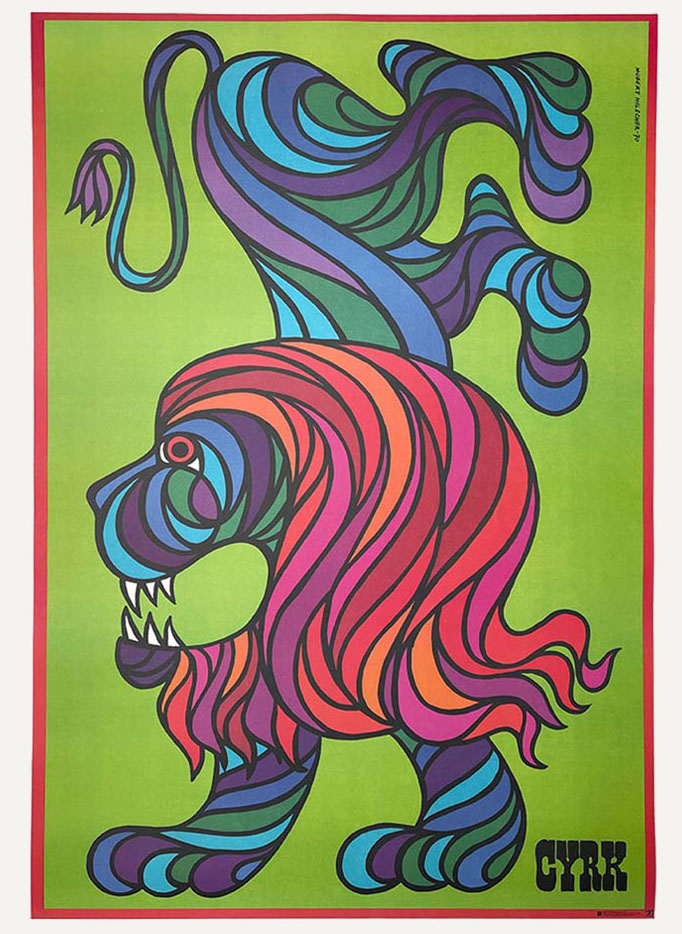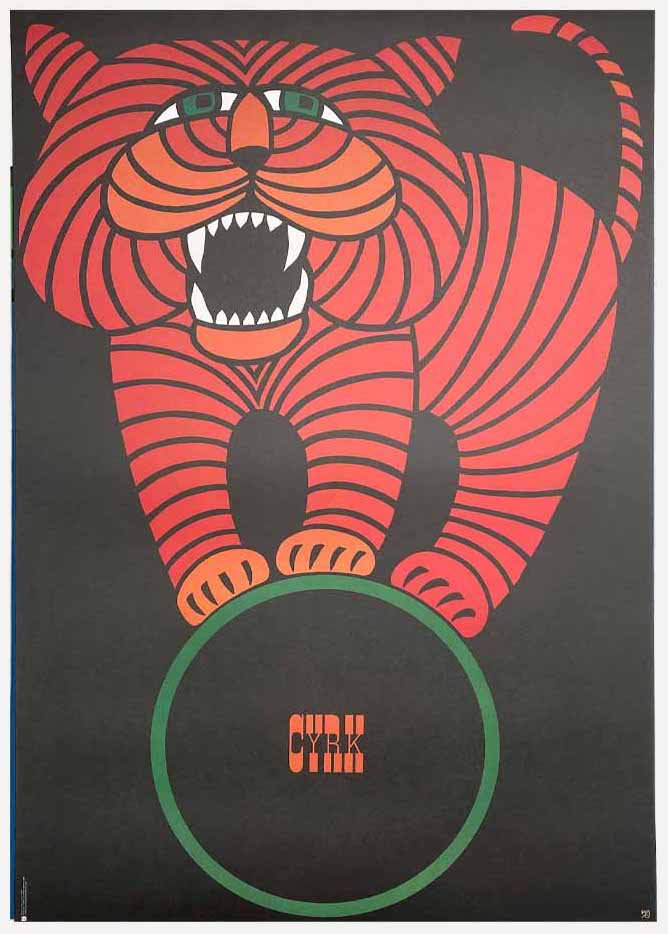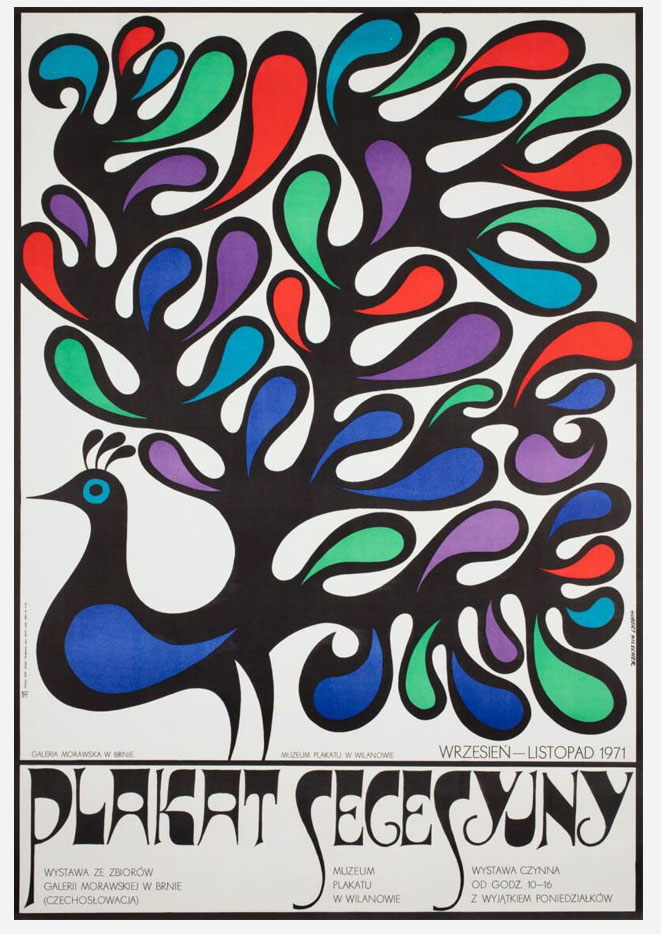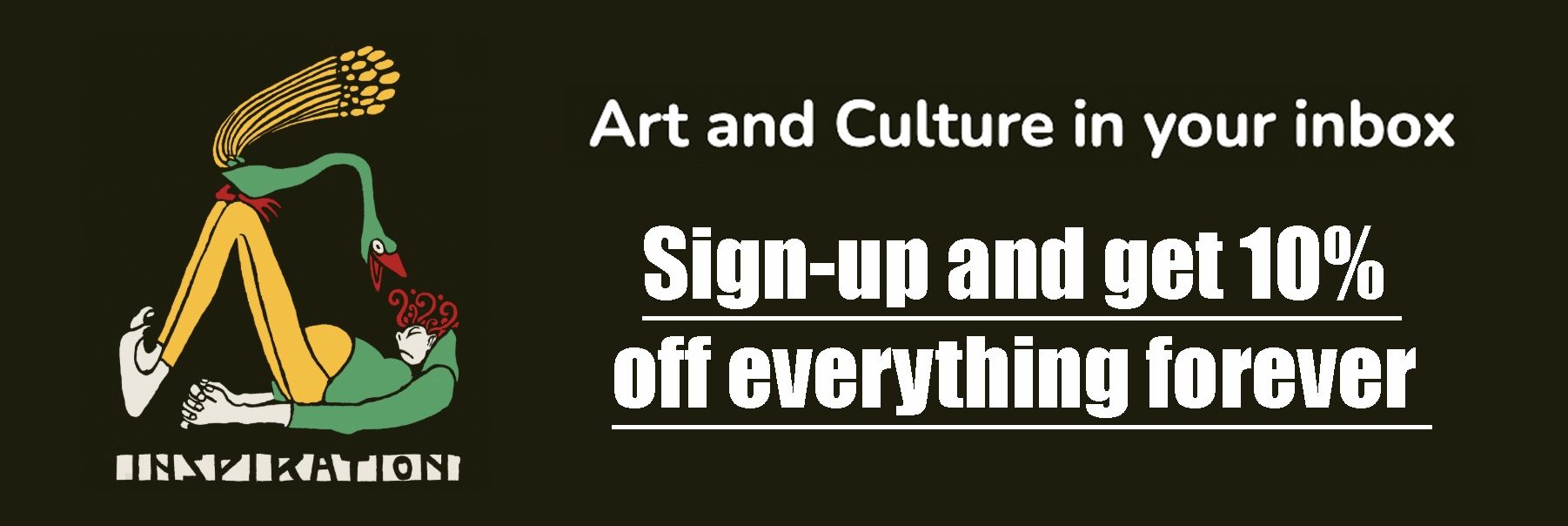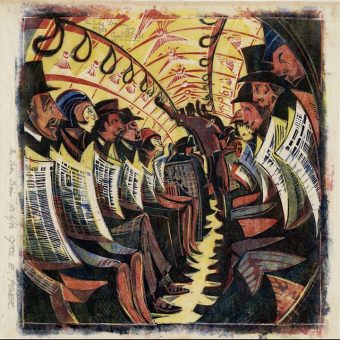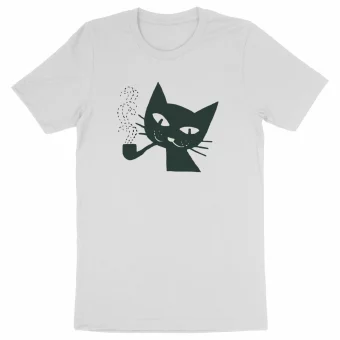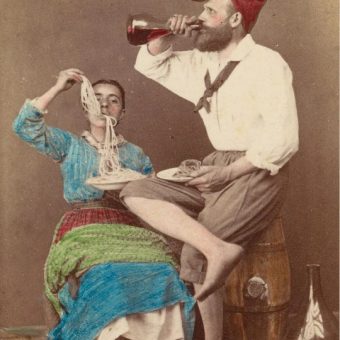It seemed to me that a person who goes to the circus to see a trained lion will also want to see it on the poster: a lion that is real but different from the one that can be seen in the zoo.”
– Hubert Hilscher
Hubert Hilscher (25 October 1924 – 19 September 1999) was a Polish graphic artist best known for his vibrant, animated and witty posters for Cyrk (Polish circus). Between 1962 and 1966, W.A.G., a Warsaw-based graphics design company, published about 100 posters in collaboration with Poland’s leading circus troupes in a bid to redefine the circus. The circus was a state-funded art in Poland, and the graphic design it inspired was as varied and imaginative as the circus acts themselves.
You can buy Hilscher’s posters in our shop.
“The end of the Second World War marked the dawn of a new period in the development of Polish poster art, which became known as the Polish School of Posters,”writes Ylain Mayer. “The recently installed Communist regime began commissioning artists to design posters not only with social and political messages, but also, and more prominently, to promote the many aspects of the government-run (Ministry of Art and Culture) cultural media: concerts, exhibitions, film, jazz, opera, theatre, etc. and the circus. The artists were instructed to reject Western values in their posters and were to follow rules about appropriate messaging, but other than that, they had complete artistic freedom.”
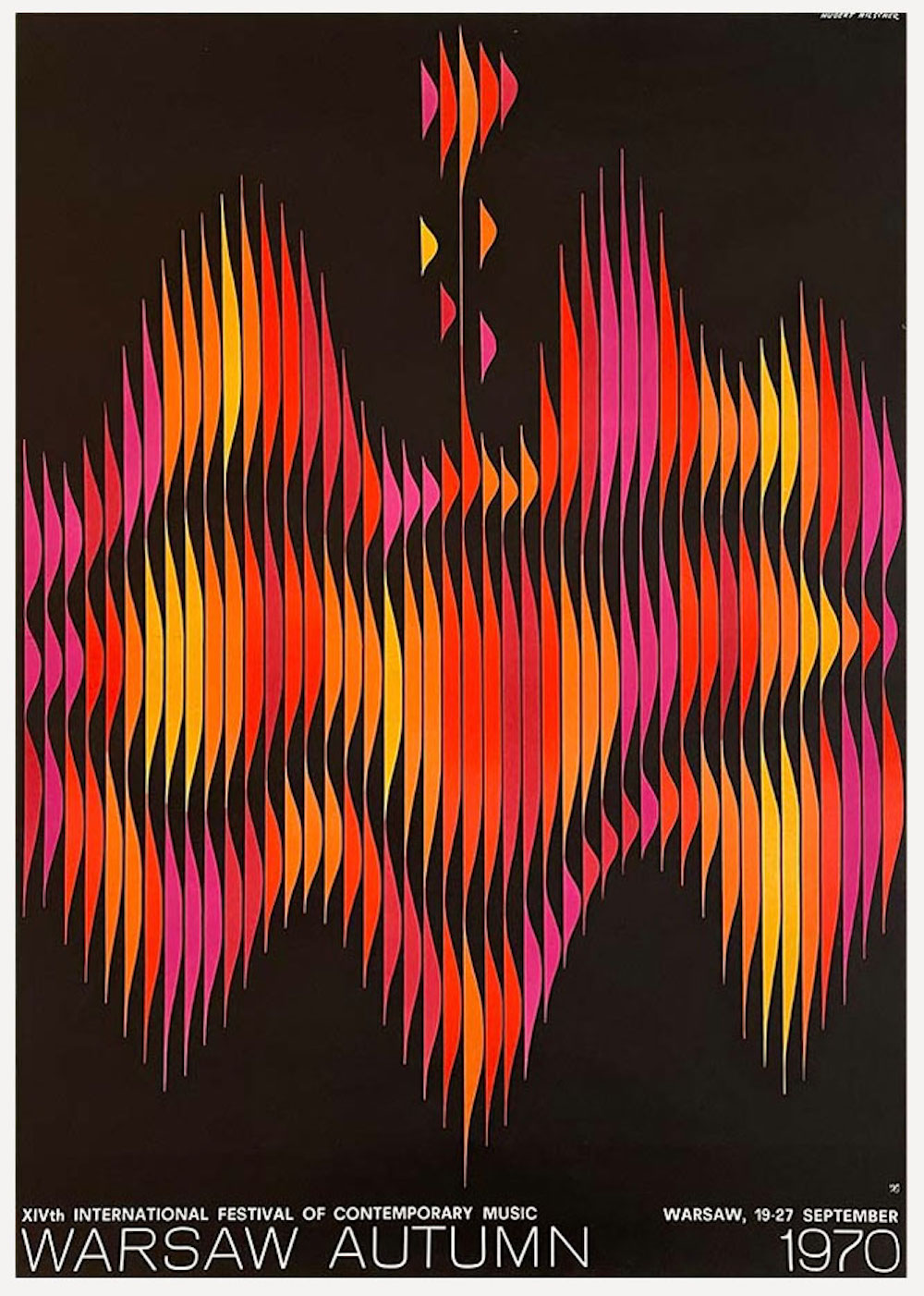
Warsaw Autumn, 1970
The Polish School of Posters
The post-war political systems in Poland greatly influenced the development of polish poster design. Beginning in 1945, Poland was known as the Polish People’s Republic, and was governed by a Soviet-supported Communist regime. Under this government, such media as the circus and the poster were given an exalted status, but they were subject to almost complete censorship.
In the 1960s, Poland achieved relative political autonomy from the USSR, and culture increasingly became the center of public life. The State, as both patron and controller of the arts, gave recognition to posters as an art form. While the State’s patronage supported the poster, the State’s encouragement created its success. This encouragement took many forms, including establishing education in poster design at polish colleges of art, and organizing national poster competitions throughout Poland. During this period, poster design became a well-recognized profession, attracting artists from various disciplines: print making, photography, illustration, sculpture, and painting; all of which contributed to the development of the Polish poster.
The 1970s witnessed a lessening of direct State supervision of the media, resulting in State-owned publishers exerting less and less influence over poster content. The political turmoil of the 1970s and 1980s further removed posters from governmental restraints. In this atmosphere of greater artistic freedom, poster design flourished; it became more dynamic, more expressive, and more artistic. Posters also became more intellectual and challenging as artists smuggled their own ideas into works still supported by the State.
Finally, in 1989, the fall of Communism in Poland and the introduction of a free market economy brought with it the end of an era—the end of the importance of the State-supported circus, and the end of the golden age of the Polish School of Posters.
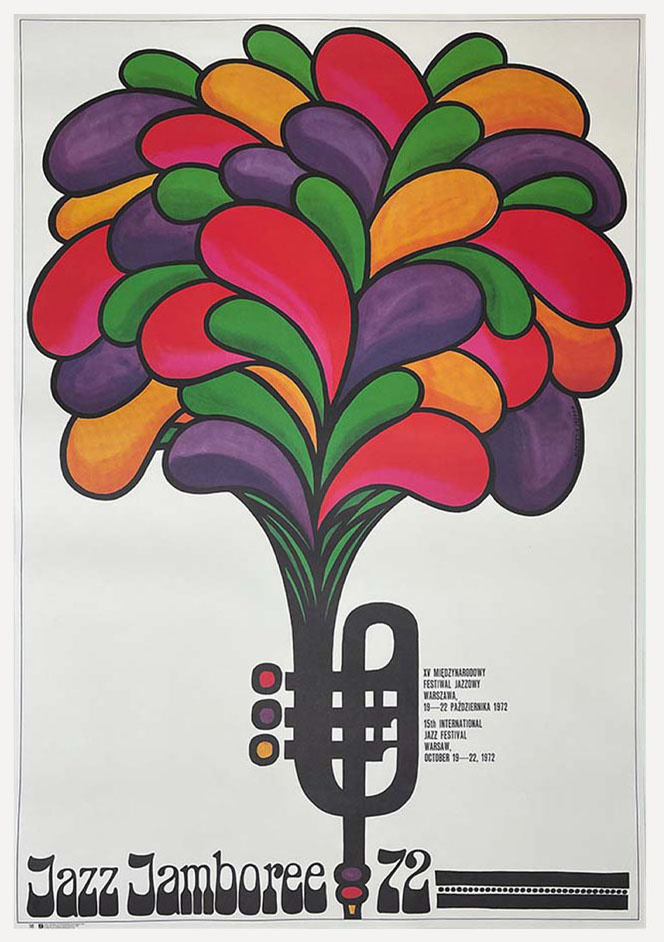
Jazz Jamboree, 1972 by Hubert Hilscher
“Letters have such beautiful forms that they can often substitute drawings. With the use of a letter in an adequate scale and font, you can actually convey any message. ”
– Hubert Hilscher
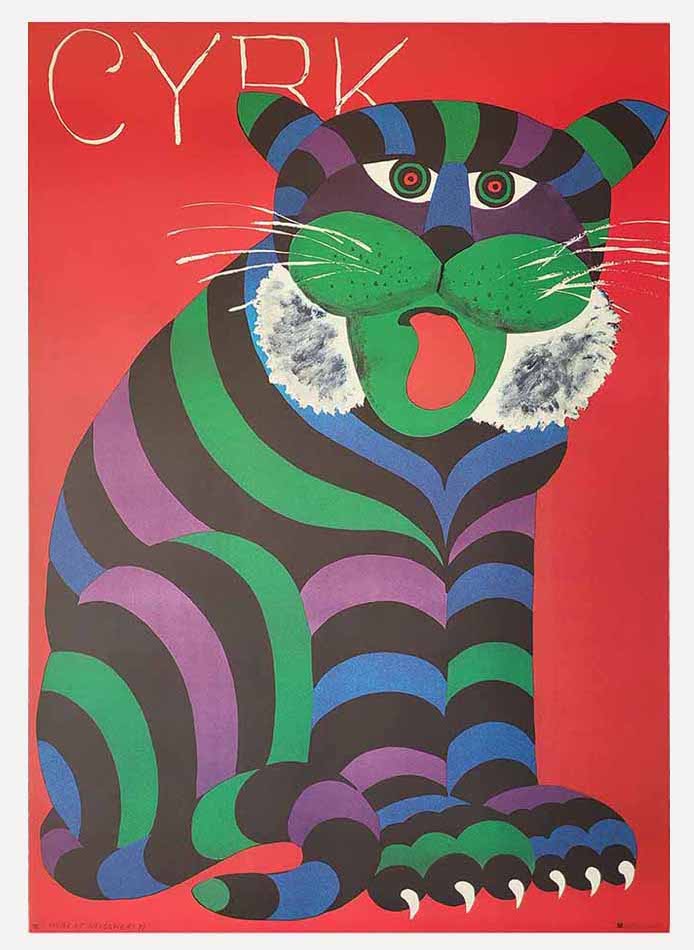
Circus Cat by Hubert Hilscher, 1971
Huber Hilscher
Hubert Hilscher was born in a German family in Poland. In 1944 when he was 20 years old, he fought in the Warsaw Uprising as a soldier of the Home Army, under the pseudonym ‘Zaremba’.
In 1949, his interest in printmaking led him to attend the State Academic School of Plastic Arts, where he studied under the tutelage of Tadeusz Kulisiewicz. The school merged with the Academy of Fine Arts in Warsaw in 1950. He graduated in 1955.
Despite being ever humble about his work, Hubert Hilscher was a highly influential and internationally acclaimed poster artist from the Polish School of Posters and one of the key founders of the Poster Biennale. He was also the creative driving force behind Projekt magazine, where he was art director for 22 years, and an award winning book designer.
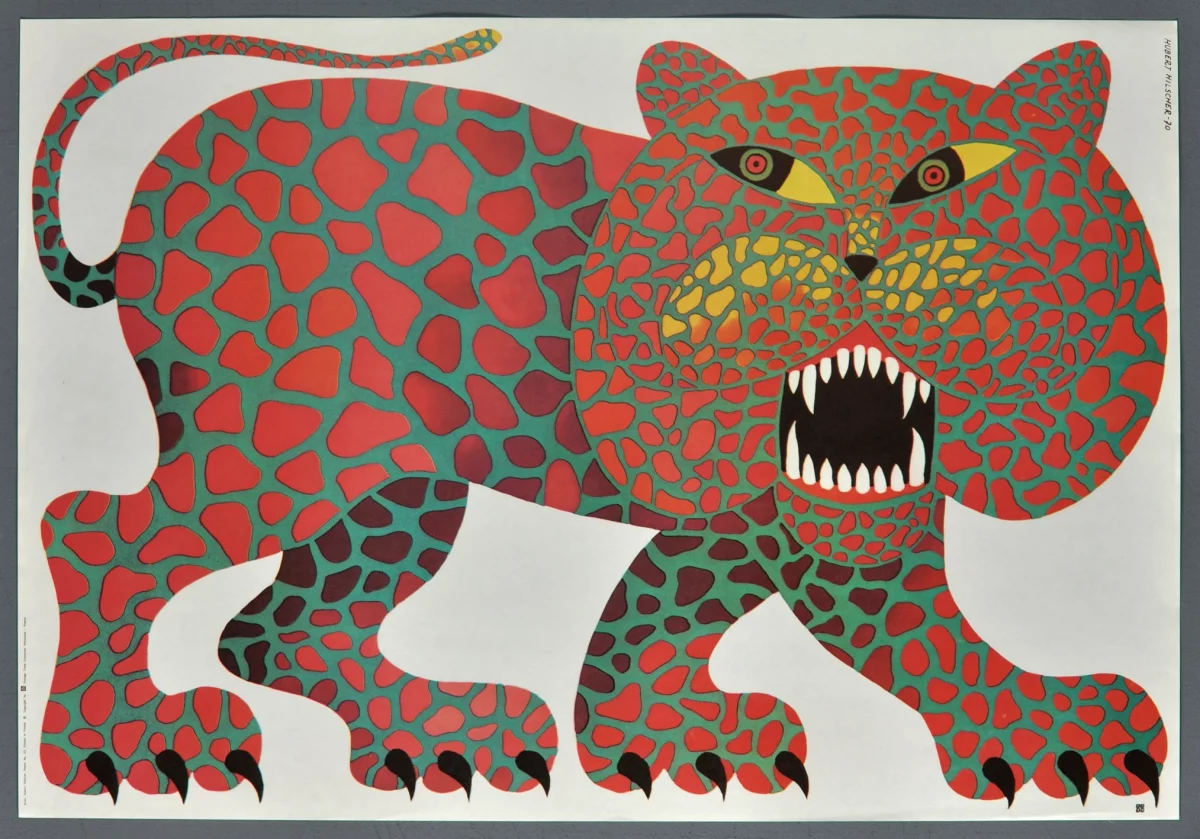
Hubert Hilscher, 1970 – Circus Leopard
“It seemed to me that a person who goes to the circus to see a trained lion will also want to see it on the poster: a lion that is real but different from the one that can be seen in the zoo. I try to adapt the depictions of animals to the circus environment by the use of unreal colour or movement but still maintaining the realist form. My circus posters are decorative (I create my other works with very simple means), because the circus is decorative as well.”
– Hubert Hilscher
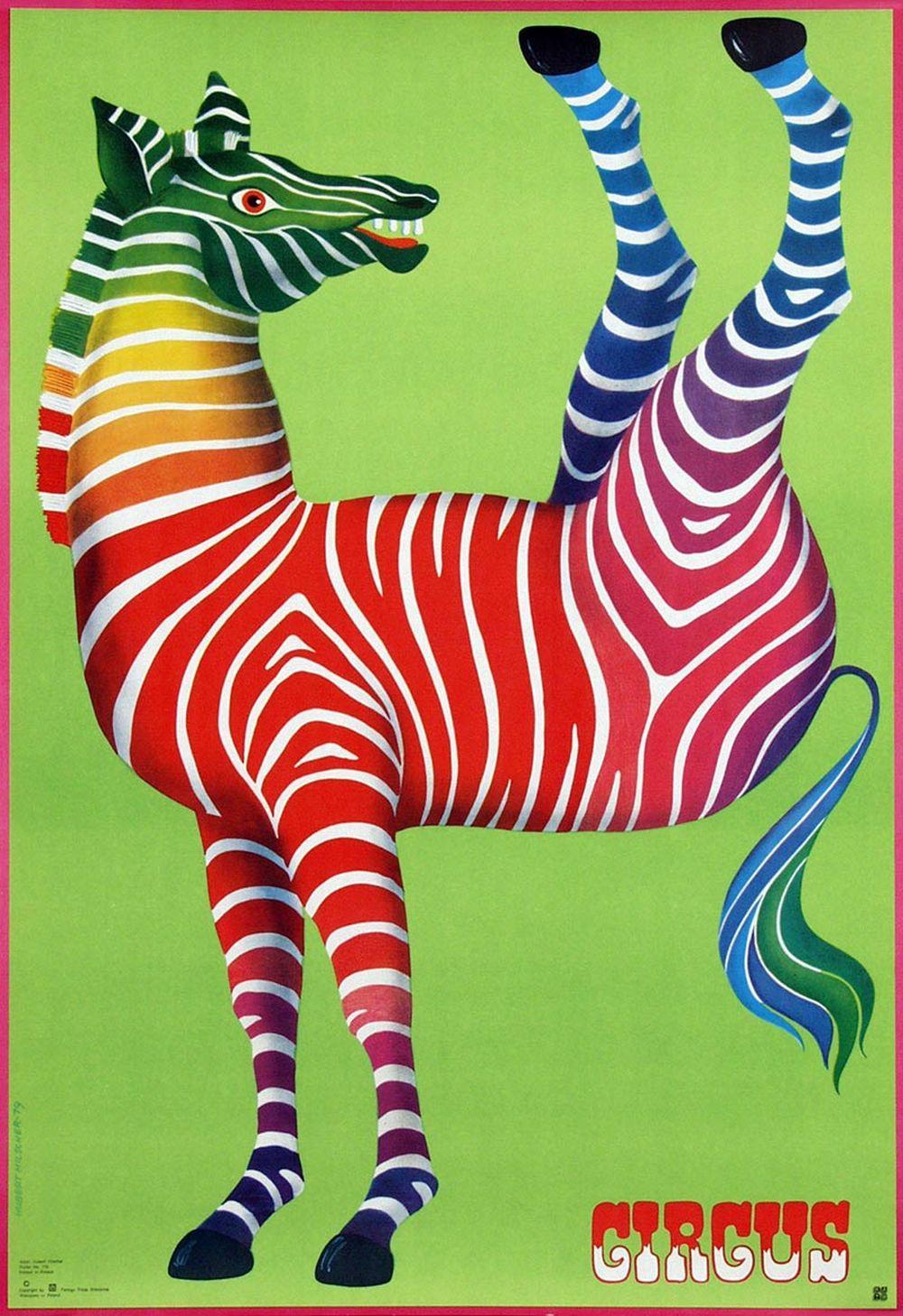
Hubert Hilscher, 1979 – Circus Stripy Zebra
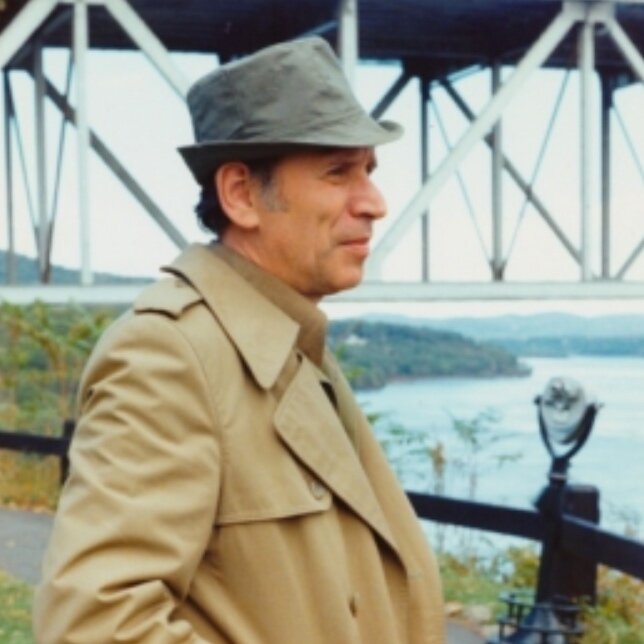
Buy Hubert Hilscher prints in the shop.
Via: Circopedia, Projekt.
Would you like to support Flashbak?
Please consider making a donation to our site. We don't want to rely on ads to bring you the best of visual culture. You can also support us by signing up to our Mailing List. And you can also follow us on Facebook, Instagram and Twitter. For great art and culture delivered to your door, visit our shop.
